In southern Florida, you’ll find a sprawling 1.5 million-acre wilderness unlike anywhere else in the US. It’s Everglades National Park, and it’s home to an astonishing array of wildlife, including alligators, manatees, crocodiles, the elusive Florida panther, and more than 360 species of birds. It’s the largest subtropical wildernesses in the US and has the largest mangrove system in the western hemisphere. In Everglades, you can camp on raised platforms above alligators, see endangered manatees in the wild, and paddle through a biosphere reserve. It’s truly unlike anywhere else in the US.
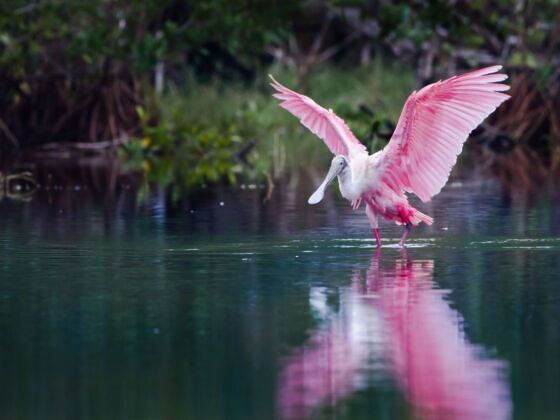

What to Know Before Planning an Everglades National Park Trip

Photo: DimaSid/Shutterstock
The best time to visit the Everglades is during the dry season, which typically runs from November to April. During this period, cooler temperatures and lower humidity levels make outdoor activities like hiking, birdwatching, and wildlife observation far more comfortable. Summer is less crowded, but that’s because it can be unbearably hot and muggy. Tours and ranger programs are also far more infrequent in the summer. Winter is technically the dry season, but rain is possible year-round.
Everglades National Park doesn’t require reservations like some busier national parks, but you should still save time at the gate by buying your entry pass in advance online. It’s $30 per car, or free with an America the Beautiful pass. If you decide to pay at the gate, have a credit card handy as cash isn’t accepted.
Here’s what to know about planning your first trip to the park, including where to go, the best wildlife and airboat tours in Everglades National Park, and where to stay in and around the unique natural treasure.
-
Jump to:
- Where is Everglades National Park?
- When did the everglades become a national park?
- What to do in Everglades National Park
- The best hikes in the park
- The best airboat tours in Everglades
- Camping in Everglades National Park
- Nearby hotels and resorts
Where is Everglades National Park?
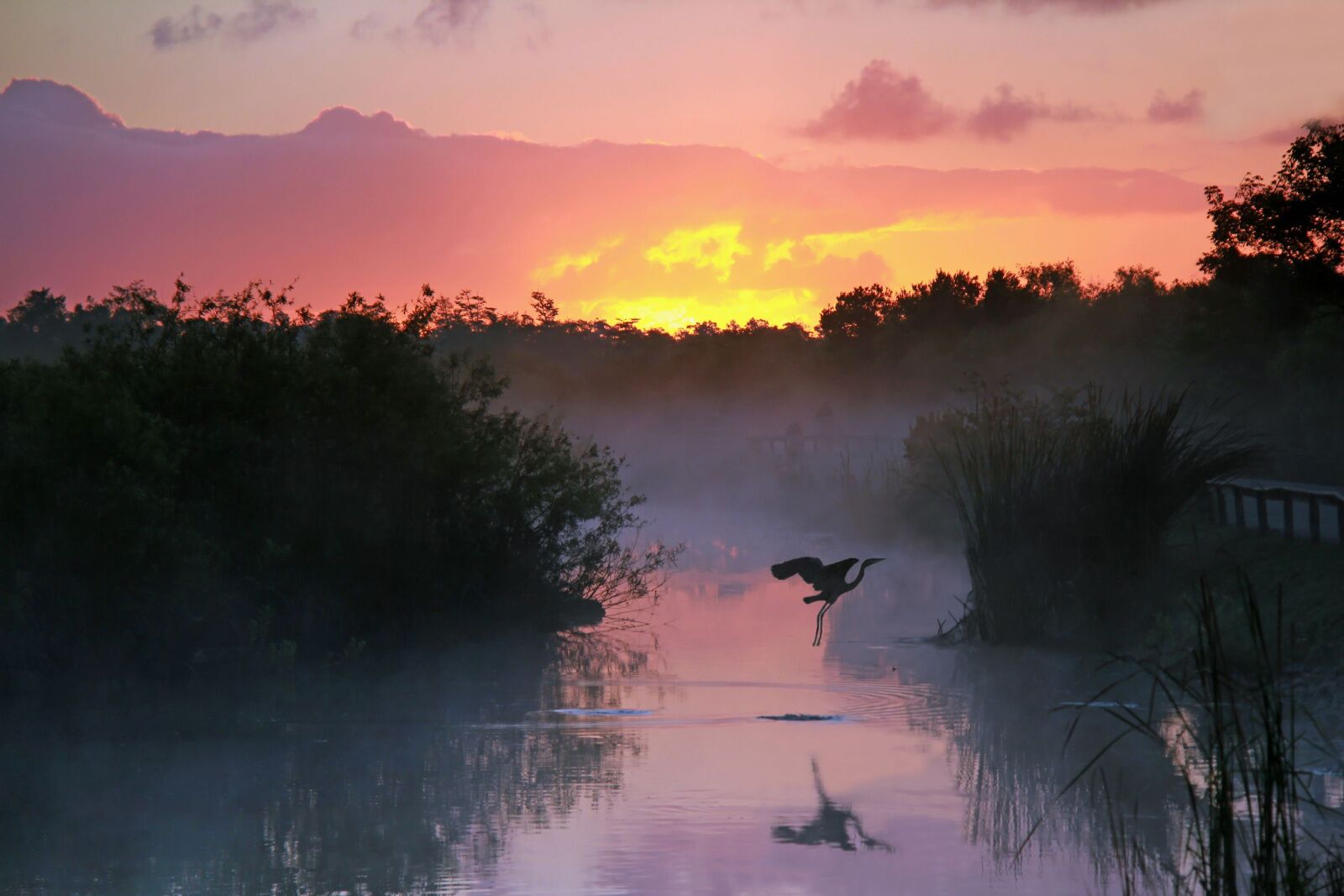
Photo: Brian Lassenby/Shutterstock
Everglades National Park is located in the southern part Florida, covering a large portion of the southern tip of the Florida peninsula. It extends from just south of Miami and stretches southwest towards the Gulf of Mexico. The park is roughly bordered by the cities of Homestead and Florida City to the east, Naples and Marco Island to the west, and Everglades City to the northwest. It encompasses a vast and unique ecosystem, including wetlands, mangroves, sawgrass prairies, and various waterways, making it one of the most ecologically diverse national parks in the United States.
Everglades is about 45 miles south of downtown Miami, so the best way to get there is to fly into Miami International Airport and rent a car. The park has three entrances (Miami, Homestead, and Everglades City), which aren’t connected. You’ll need a car since it’s a long drive to get to various sections of the park and there’s no public transportation. The Homestead Entrance is the main entrance and has the largest visitors center.
When did the Everglades become a national park?

Photo: Anthony Ricci/Shutterstock
Everglades National Park’s history dates back thousands of years when Indigenous peoples, including the Calusa and Seminole tribes, first inhabited the region. They lived off the land, relying on the abundant wildlife and plant resources of the area.
In the late 19th century and early 20th century, the Florida Everglades faced increasing threats from agricultural development and drainage projects. Efforts to reclaim land for agriculture and urban development led to the destruction of vast swaths of the Everglades ecosystem, which prompted conservationists and environmentalists to advocate for the protection of this fragile and essential wilderness. One of the most famous of these advocates was Marjory Stoneman Douglas, for whom the park’s wilderness area is named.
Thanks in part to successful lobbying and media attention, on December 6, 1947, Everglades National Park was established, becoming the first national park dedicated to the preservation of a tropical ecosystem. It’s the third-largest park outside of Alaska and is also a UNESCO International Biosphere Reserve.
What to do in Everglades National Park
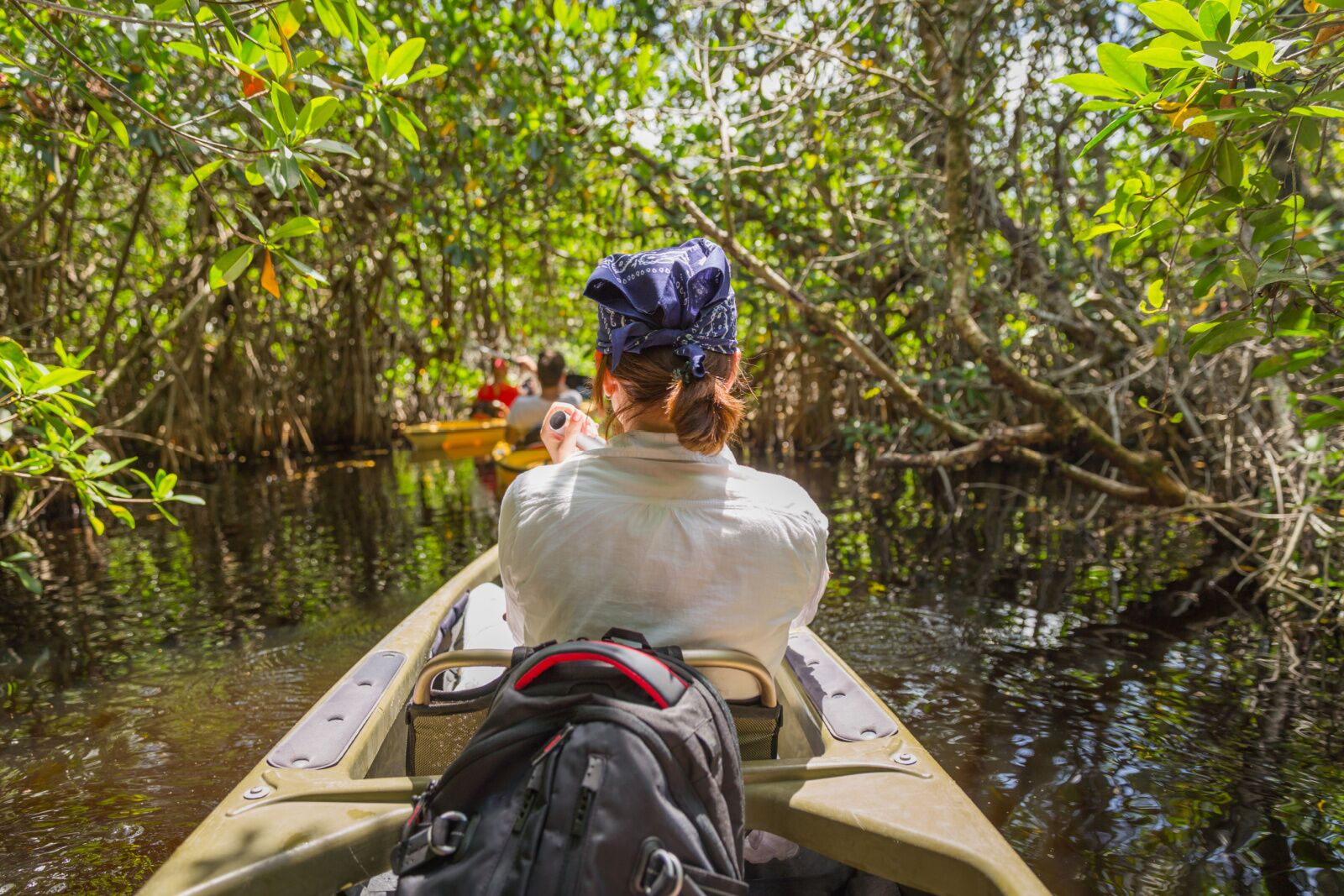
Photo: Mariakray/Shutterstock
The best things to do in Everglades National Park lean into the park’s wildlife and biodiversity, with opportunities to observe alligators, manatees, crocodiles, panthers, and numerous bird species in their natural habitat.
Airboat tours are extremely popular (recommendations below), as are canoeing and kayaking tours along the park’s hundreds of miles of waterways. You can rent kayaks within the park from Flamingo Adventures or Everglades Florida Adventures and choose your own adventure along the park’s paddle trails, or sign up for a guided tour with one of more than a dozen companies licensed to operate in the park.
Wildlife watching is also huge, and there are several raised platforms for birding throughout the park (bring binoculars) as well as free birding walks throughout the year. You’ll see alligators just about everywhere, and sightings of adorable (and endangered) manatees are common around the Flamingo area. Many of the ranger programs in the park are focused on ecology and wildlife, so keep an eye on the park event calendar. For a leisurely way to learn about the Everglades, book a two-hour tram tour, which runs multiple times per day. You can also rent bikes and bike the tram route yourself, if you’d prefer something more active.
You’ll find approved guides for other activities, like photography tours or fishing charters, on the park’s page of approved outfitters. These operators are approved and vetted from a safety and environmental impact perspective, and booking with them ensures you support sustainable tourism in the sensitive environment. And it probably goes without saying, because alligators, but swimming isn’t allowed anywhere in the park.
The best walks and hikes in the park

Photo: Andy Lidstone/Shutterstock
The best airboat tours in the Everglades
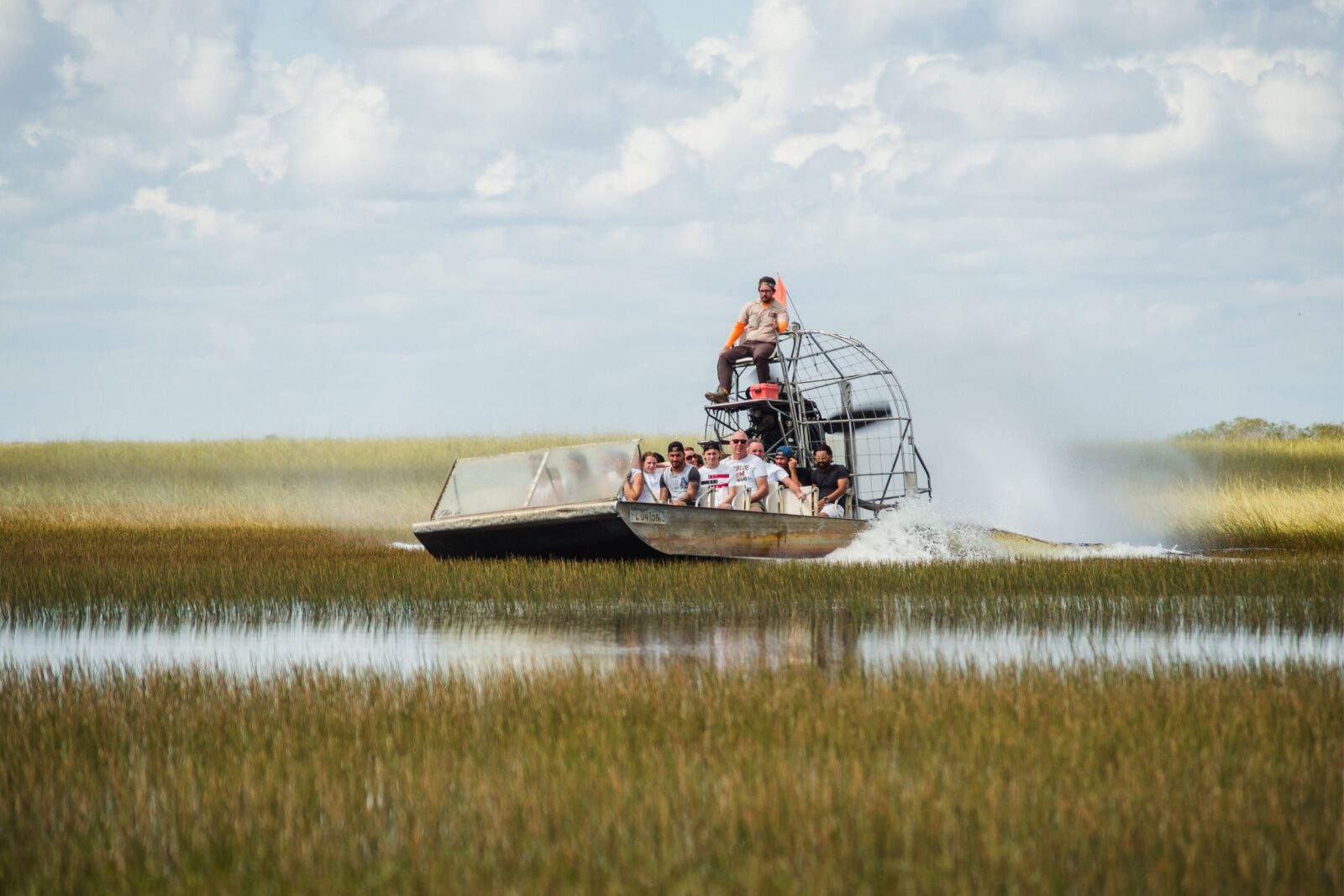
Photo: Mirigrina/Shutterstock
An airboat is a type of watercraft commonly used in marshy or shallow-water environments, and touring the waterways of Everglades National Park on an airboat is probably the park’s most popular activity. These tours are typically conducted by experienced guides who operate the airboats and provide information about the local flora and fauna, as well as the history and ecology of the area. Passengers sit in an open-air seating area on the boats, which move at high speeds, so you may want a light jacket (and you may also get a little wet).
We hope you love the activities and stays we recommend! Just so you know, Matador may collect a small commission from the links on this page if you decide to book a stay or activity. Listed prices are accurate as of the time of publication.
In Everglades, there are three operators licensed to provide airboat tours: Coopertown Airboats, Everglades Safari Park Tours, and Gator Park. (Note that Gator Park and Everglades Safari park both have captive alligators.) All three tours are between one and two hours long and move through the Everglades while your guide helps you look out for alligators, native birds, and other wildlife that live in the swampy areas.
You can also book tours that explore the areas just outside of the park, but don’t technically go inside the park boundaries. Good options include this airboat tour near Sawgrass National Park ($30 per person), this nighttime airboat tour ($48) near Fort Lauderdale, or this naturalist-led combined airboat and hiking tour ($169), which includes pickup from your hotel or home in the Miami area.
Camping in the Everglades
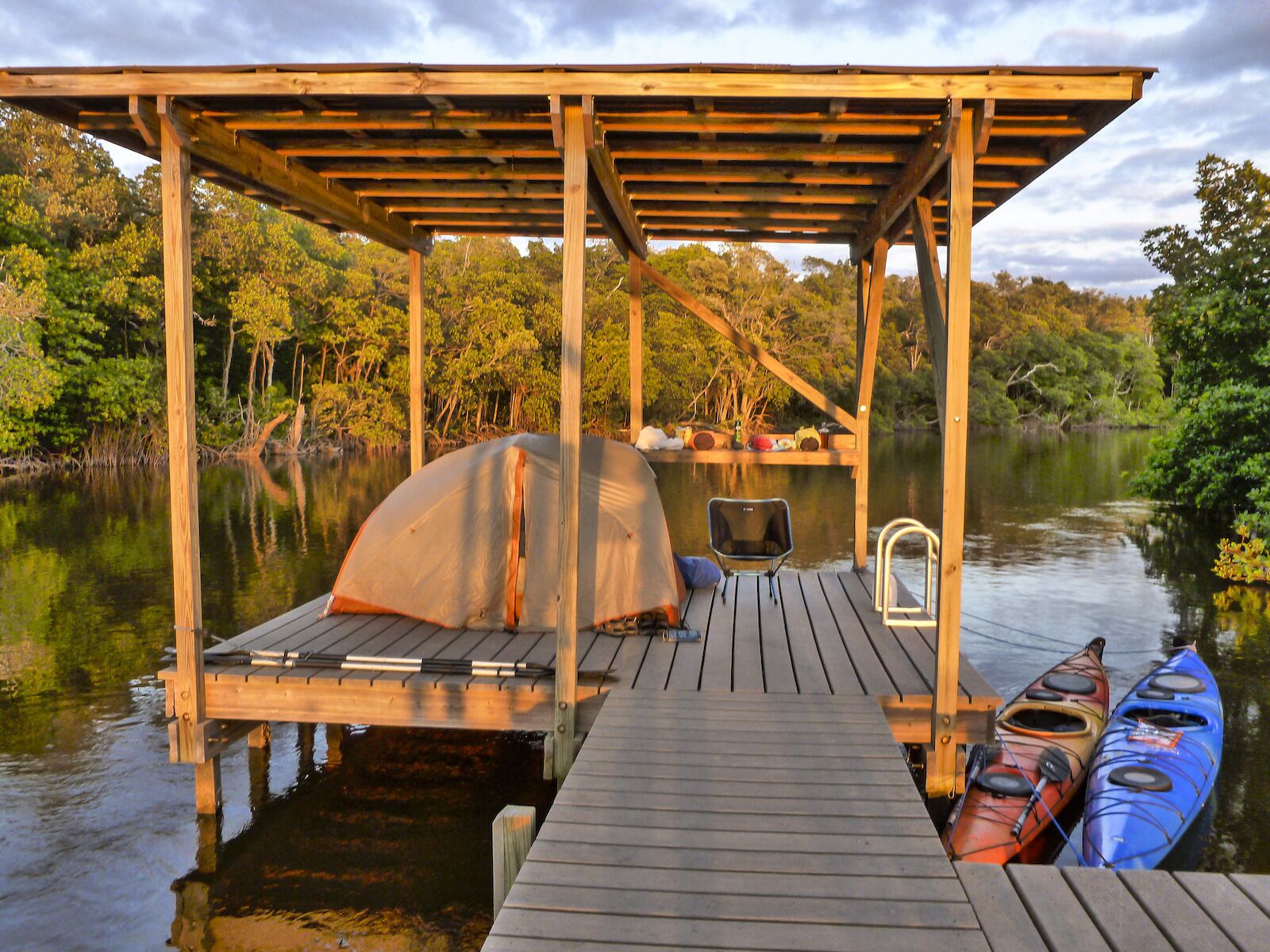
Photo: NPS / Jane Gamble
There are two types of camping available in Everglades National Park: frontcountry camping and backcountry camping.
The two frontcountry (drive-in) sites are Flamingo Campground and Long Pine Key Campground. Both have communal restrooms, showers, wash stations, and hot showers, plus each individual camp site has its own picnic table and fire pit. Flamingo Campground is open year-round, while Long Pine Key Campground is closed from May 1 to October 31. Long Pine Key is smaller, but also has more trees, which means sites feel like a bit more private. It’s also more central, while the Flamingo Campground is a bit further south. Reservations for both should be made in advance online through the website of the third-party company that manages the campsites.
The second option for camping is backcountry camping. Unlike many national parks, at Everglades, most of the sites are reached via paddling, not hiking. Many of the backcountry sites are raised wooden platforms above the water (called “chickadees”), which is a really unique experience you can’t have at most other parks. There are also quite a few beach camping sites. It’s recommended that you make your backcountry campground reservations in advance online.
You can reserve all sites in advance, all year long. Any campsites not reserved in advance are available on a first-come, first-served basis at the Everglades visitors centers, where staff can assist in creating a multi-day route between the park’s many backcountry campground locations.
Note that there’s no dispersed camping allowed, so you have to camp in a designated area. And be sure to have a freestanding (non-staked) tent if you’re camping on a raised chickadee platform.
Nearby hotels and resorts
If camping isn’t your thing, you’ll be happy to know that starting November 1, 2023, there will be one place to stay in Everglades National Park: the brand new Flamingo Lodge and Restaurant. Rooms are simple and modern, with a great starting price ($159 per night) and free WiFi. It’s near the Flamingo Campground and just steps from the water, making it a good place to stay if you want to stargaze and wake up in the park, but aren’t into the idea of pitching a tent in the wetlands.
Otherwise, you’ll want to stay in one of the cities near the park — here are the best options, listed by distance. Airbnbs near Everglades are readily available, too.
Homestead/Florida City: 10 miles from the park
Homestead has some of the most popular places to stay near Everglades National Park, probably because it’s close to the park while still offering access to the amenities of the southern Miami area.
Leisure City: 16 miles from the park
Leisure City is just north of Homestead and has access to many big stores such as Walmart, grocery stores, Target, and other places to pick up last-minute items for your trip to the park.
Marco Island: 30 miles
Marco Island, on Florida’s gulf coast, is one of the best places to stay if you’re spending time near the western part of the park. It’s also closer to other Florida beach destinations like Naples and Fort Myers, so may be a better place to stay if you’re already on Florida’s west coast.